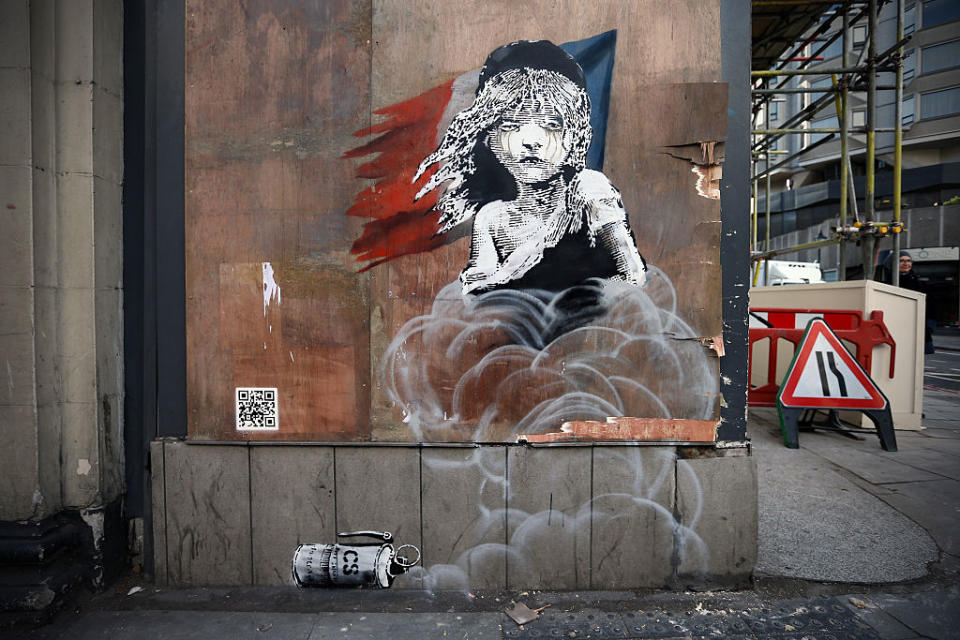Science is trying to get to the bottom of who Banksy really is
Science is trying to get to the bottom of who Banksy really is
Science—is there anything it can’t do?
It put a man on the moon, cured polio, and now, if this study is to be believed, can find the identity of the ever-elusive graffiti artist Banksy.
Scientists at the Queen Mary University of London have used geographic profiling, which was originally developed to find serial criminals and terrorists, to confirm the identify the prolific artist. Biologist Dr. Steven Le Comber first learned of geographic profiling from criminologist Kim Rossmo, and realized it could be a useful tool in the field of epidemiology, as well. The pair now collaborates on methods which will help pinpoint not just potential viral outbreaks, but “criminals” like Banksy. I smell an upcoming television series a la Bones!
Their system, known as Dirichlet process mixture modeling (try saying that ten times fast), is much more sophisticated than the criminal geographic targeting (CGT) currently used by crime-fighters. CGT is based on a simple assumption: that crimes happen near where those responsible reside. Plot out an incident map and the points should surround the criminal like a doughnut (troublemakers tend not to offend on their own doorsteps, but they also refrain from straying too far).
As The Economist explains:
The Dirichlet model allows for more than one “source”—a place relevant to a suspect such as home, work or a frequent pit stop on a commute—but makes no assumptions about their number; it automatically parses the mess of crime sites into clusters of activity. Then, for each site, it calculates the probability that the given array of activity, and the way it is clustered, would result from any given source. Through a monumental summing of probabilities across each and every possible combination of sources, the model spits out the most likely ones, with considerable precision—down to 50 meters or so in some cases.
Seriously, how is this not a television show or movie?
To try to pin down Banksy’s identity, the dynamic duo gathered the locations of 140 of his alleged works in London and Bristol. Within the peaks they found, as they reported this week in the Journal of Spatial Science, were “a pub, playing fields and a residential address in Bristol, and three addresses in London.” All were associated with one person: Robin Gunningham. The plot thickens… or does it? This is not, in the end, much of a surprise. Gunningham was publicly fingered as Banksy back in 2008. But this latest news suggests those fingers were pointing in the right direction.
Now I can only cross those pointing fingers and hope that Banksy might pay a visit to my apartment. We have an ugly concrete wall that could use some of his beauty…
The post Science is trying to get to the bottom of who Banksy really is appeared first on HelloGiggles.


